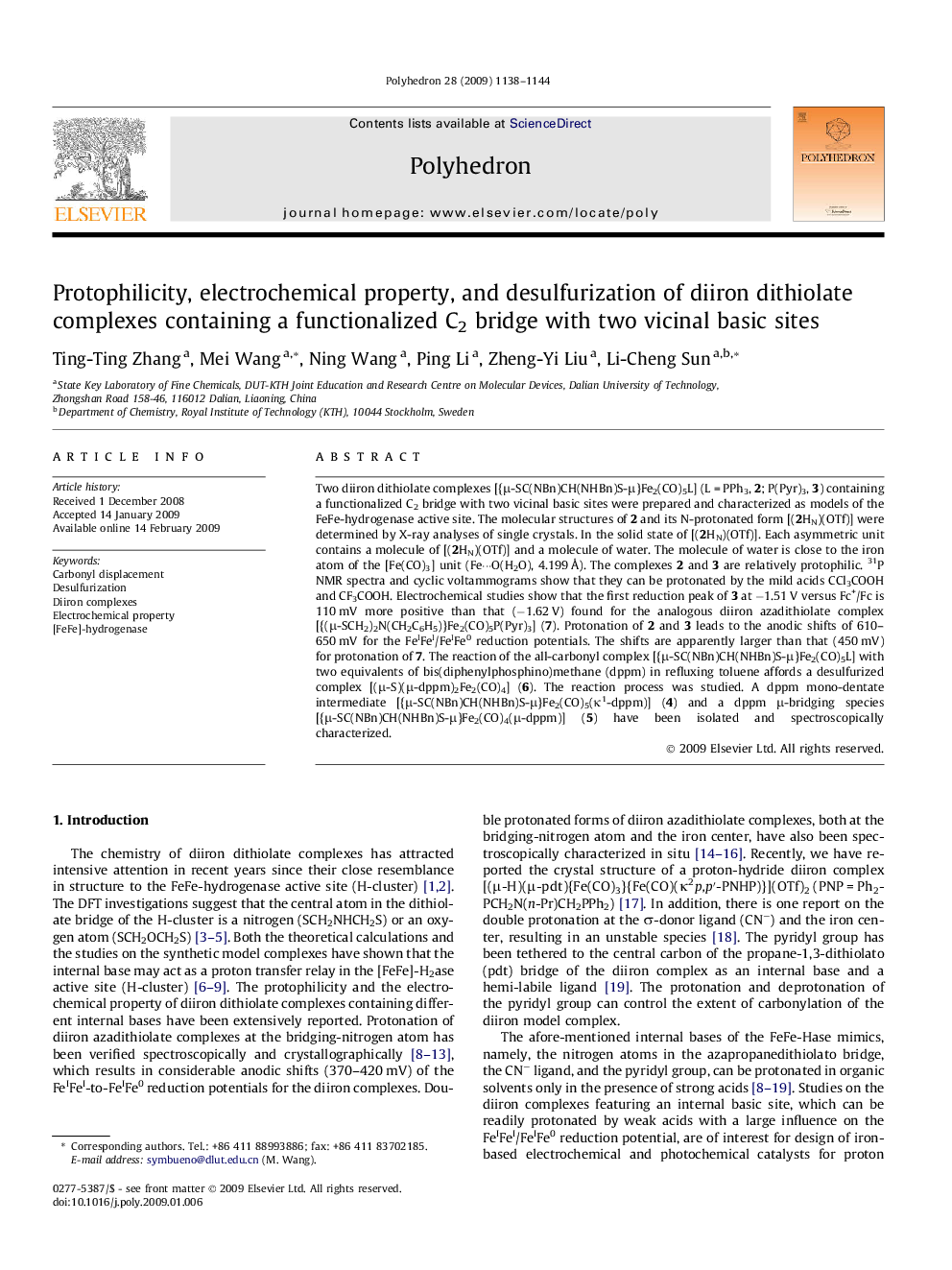| Article ID | Journal | Published Year | Pages | File Type |
|---|---|---|---|---|
| 1340253 | Polyhedron | 2009 | 7 Pages |
Two diiron dithiolate complexes [{μ-SC(NBn)CH(NHBn)S-μ}Fe2(CO)5L] (L = PPh3, 2; P(Pyr)3, 3) containing a functionalized C2 bridge with two vicinal basic sites were prepared and characterized as models of the FeFe-hydrogenase active site. The molecular structures of 2 and its N-protonated form [(2HN)(OTf)] were determined by X-ray analyses of single crystals. In the solid state of [(2HN)(OTf)]. Each asymmetric unit contains a molecule of [(2HN)(OTf)] and a molecule of water. The molecule of water is close to the iron atom of the [Fe(CO)3] unit (Fe···O(H2O), 4.199 Å). The complexes 2 and 3 are relatively protophilic. 31P NMR spectra and cyclic voltammograms show that they can be protonated by the mild acids CCl3COOH and CF3COOH. Electrochemical studies show that the first reduction peak of 3 at −1.51 V versus Fc+/Fc is 110 mV more positive than that (−1.62 V) found for the analogous diiron azadithiolate complex [{(μ-SCH2)2N(CH2C6H5)}Fe2(CO)5P(Pyr)3] (7). Protonation of 2 and 3 leads to the anodic shifts of 610–650 mV for the FeIFeI/FeIFe0 reduction potentials. The shifts are apparently larger than that (450 mV) for protonation of 7. The reaction of the all-carbonyl complex [{μ-SC(NBn)CH(NHBn)S-μ}Fe2(CO)5L] with two equivalents of bis(diphenylphosphino)methane (dppm) in refluxing toluene affords a desulfurized complex [(μ-S)(μ-dppm)2Fe2(CO)4] (6). The reaction process was studied. A dppm mono-dentate intermediate [{μ-SC(NBn)CH(NHBn)S-μ}Fe2(CO)5(κ1-dppm)] (4) and a dppm μ-bridging species [{μ-SC(NBn)CH(NHBn)S-μ}Fe2(CO)4(μ-dppm)] (5) have been isolated and spectroscopically characterized.
Graphical abstractDiiron dithiolate complexes containing a functionalized C2 bridge with two vicinal basic sites were prepared as models of the FeFe-hydrogenase active site. Protonation of these complexes is instant and reversible, which leads to a large anodic shift (610–650 mV) for the FeIFeI/FeIFe0 reduction potentials. Desulfurization reaction was found for the C2-bridged diiron complex.Figure optionsDownload full-size imageDownload as PowerPoint slide
